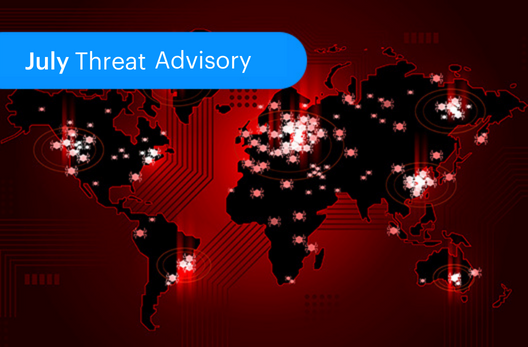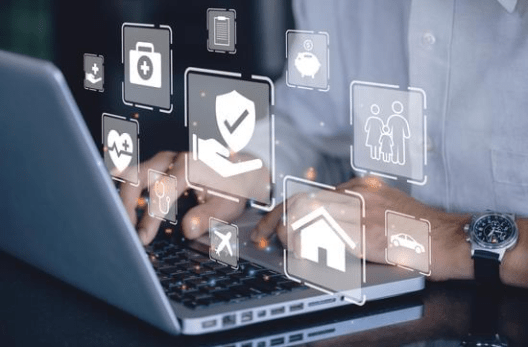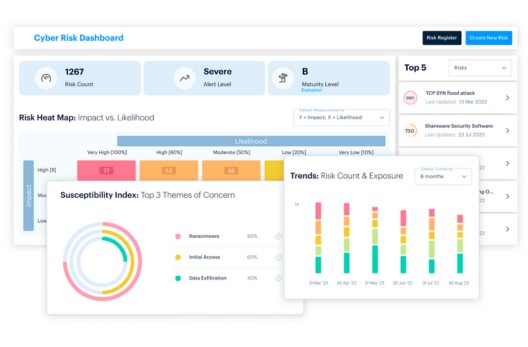Industry Insights • 10 MIN READ
Protecting a Nation – Safeguarding the U.S. Against Cyber Threats
by Eleanor Barlow • Aug 2023
As the threat landscape continues to evolve, and stakes continue to rise, awareness of the nature of cybersecurity threats targeting the US becomes paramount in safeguarding our digital landscape and protecting the nation’s interests.
The United States remains a primary target for cyberattacks. According to SG Analytics, 46% of all cyberattacks worldwide take place in the US. And with cloud ecosystems gaining momentum, cybersecurity threats pose significant challenges to individuals, businesses, and the overall growth of the country.
A report by the Internet Crime Complaint Center (IC3) of the FBI, shows that in 2022 over 800,000 complaints related to cybercrime were filed, resulting in losses exceeding $10 billion—an alarming escalation compared to the $6.9 billion reported in 2021. These statistics are only set to increase into 2023, and further emphasize the magnitude of the problem and the urgent need for robust cybersecurity measures.
This blog will look at some key cyber security threats currently targeting the US, with steps to prevent.
- Ransomware Attacks
Ransomware attacks are among the most pervasive cybersecurity threats targeting the U.S at present. Ransomware attacks involve the deployment of malicious software that encrypts a victim’s data, rendering it inaccessible until a ransom is paid. LockBit is an example of a prominent ransomware group targeting the US.
‘LockBit has typically focused attacks on government entities and enterprises in a variety of sectors, such as healthcare, financial services, and industrial goods and services. The ransomware has been observed targeting countries globally, including the US, China, India, Indonesia, Ukraine, France, the UK, and Germany.’ – The Prolificacy of LockBit Ransomware.
Next Step: Download this white paper, for x40 simple steps to safeguard against Ransomware Attack.
- Phishing Attacks
The initial phase of a ransomware attack is of course often a phishing attack. The United States is a prime target for phishing attacks due to its economy, technological advancements, large online population and spend rate, and wide range of industries. These attacks have become increasingly sophisticated, utilizing tactics such as fraudulent emails, text messages, or fake websites that mimic trusted entities like banks, e-commerce platforms, or government agencies. The goal of a phishing attack is to exploit the trust of unsuspecting individuals and convince them to disclose personal information, such as login credentials, financial details, Social Security numbers, etc.
Next Step: Read this blog on the latest wave of Spear Phishing attacks, using HTML attachments to gain access to data.
- Distributed Denial of Service (DDoS) Attacks
DDoS attacks are a serious concern for businesses and infrastructure in the United States. These attacks aim to flood target systems or networks with a massive volume of traffic, rendering them inaccessible to legitimate users. Recently, the CISA issued a warning against DDoS attacks plaguing various organizations in the country. While the CISA mentioned no specific threat actor, the advisory was released after website operations of both government and private organizations were interrupted in a DDoS attack by Anonymous Sudan.
‘These attacks appear to be a combination of various volumetric DDoS attacks that were designed to overwhelm internal network capacity and even centralized DDoS mitigation scrubbing facilities with significantly high volumes of malicious traffic. Banks and Financial institutions need to be aware of this group, and how to enhance their security posture.’ – Anonymous Sudan, What You Need to Know.
Next Step: Adequate and swift patching is crucial to secure endpoints. It is often the simple patching elements that are forgotten and can expose an organisation in a matter of minutes. Learn more about Endpoint Detection and Response, here.
- Supply Chain Attacks
With higher speed, reduced latency, and a greater number of connected devices, cybercriminals have a wider bandwidth to exploit Supply Chain Attacks. The interconnectedness and reliance between businesses and their providers, especially on 5G networks within critical infrastructure sectors in the U.S., such as energy, transportation, healthcare, and financial systems, make them extremely attractive targets for cybercriminals seeking to disrupt essential services, cause widespread chaos, or compromise sensitive data.
‘When established organisations use open-source code to deliver solutions and services they put their customers at risk. And while supply chain threats are already high, and threat groups become more sophisticated, the situation is amplified when organisations have a lack of control on their code.’ – SecurityHQ
Next Step: Read more about Supply Chain Attacks here, and for full visibility of threats targeting you.
Enhancing Cybersecurity Defenses
Considering the escalating cybersecurity threats facing the United States, it has become crucial for organizations to prioritize robust cybersecurity measures.
To address these challenges and fortify your defenses, ensure you have comprehensive Managed Services encompassing round-the-clock vigilance, real-time threat detection, compliance and risk minimization, penetration testing, and more, in place.
If you’re struggling to navigate the complex cybersecurity landscape and want to work towards a more secure digital future, speak to our experts today.











